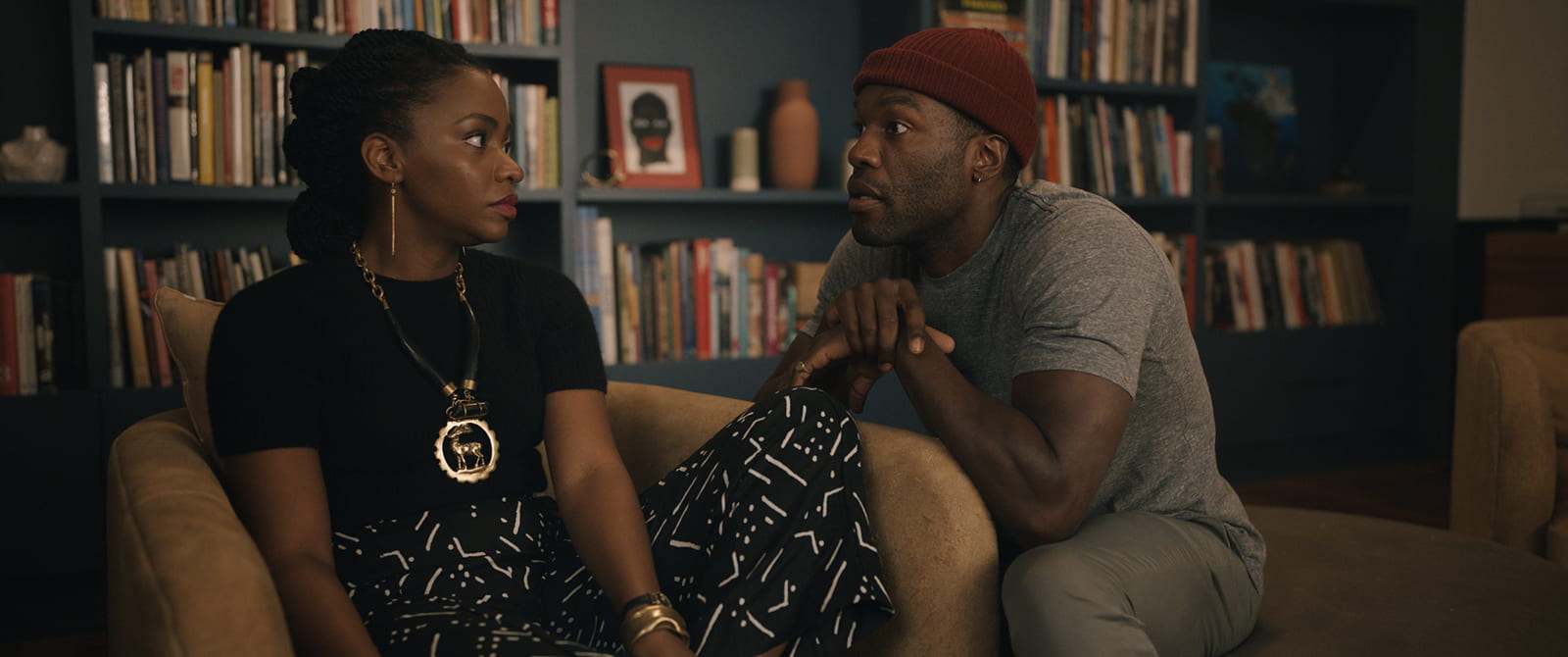
Teyonah Parris, left, and Yahya Abdul-Mateen II in “Candyman.” Credit: Universal Pictures and MGM Pictures/TNS
A highly anticipated reboot of the 1992 cult classic horror film ‘Candyman’ delivered big in every regard, with producer Jordan Peele, director Nia DaCosta and actor Tony Todd reprising his infamous role as the terrifying slasher, Candyman.
With creative talent on board and delays throughout 2020 due to the lockdown, it is no surprise the film turned into a box office success. Raking in upwards of $22 million on opening weekend, this movie received high praise from critics.
Kicking the movie off in what seems to be an inconspicuous way, protagonist Anthony (Yahya Abdul-Mateen II) and his girlfriend Brianna (Teyonah Parris) move into the newly gentrified neighborhood of Cabrini-Green in Chicago, which is the setting of the original film. Anthony is trying to make it big as an artist but seems to lack inspiration.
A chance encounter with a man from the neighborhood introduces him to the legend of Candyman, which becomes the new inspiration for his latest work. As his obsession grows, Anthony musters up the courage to summon Candyman. However, he is unaware that in doing so, he sets in motion a fate that has already been in the works for many years.
While reckoning with issues of race, tragedy and everything else one would expect to see in a Jordan Peele production, this movie hits hard and is not afraid to be assertive and brutally honest in its themes and writing. Although the story seems rushed at times because of its short, 90-minute run time, the film remains frightening and intense throughout, with genuine comedic relief when needed. The writing in this film is strong and helps to make this reboot a prime example of modern-day horror.
Along with innovative writing and unique storytelling elements that will keep viewers on the edge of their seat, the film’s cinematography is strong. The use of reflections, colors and beautiful transition shots make this film visually stunning.
There are several shots that pay homage to the original movie, such as the slow opening sequence of Chicago. It truly feels like this film is meant to be seen on the big screen, and cinematographer John Guleserian does an outstanding job of capturing the tone and essence of the characters and setting.
The prevailing theme throughout this movie is trauma, ultimately that of Black men throughout history. The vessel for this theme is the way in which the film introduced multiple traumatized Black men who had passed and ultimately come back to don the title of Candyman, as opposed to just one. These different versions of Candyman result from the numerous horrors and traumas the audience watches Black men from the past and present endure in this movie, with the end goal of striking fear into the communities that violently wronged them.
The film takes an entirely different approach to the backstory and psychology behind Candyman. This pays off wonderfully because there is, in turn, more to the character than just an emotionless killer in this adaptation; rather, Candyman is someone the audience may learn to sympathize with at times.
Ultimately, this film has all the makings of a successful horror movie, despite its mere 90 minutes of storytelling. With a complex plot and subplots, genuine character arcs and no shortage of gore, the film does an incredible job of reminding viewers why Candyman is such a frightening, iconic and beloved character. It is truly a refreshing take on the legend, which breathes new life into the modern-day horror genre.
Rating 4/5


